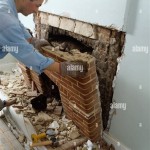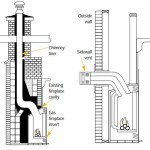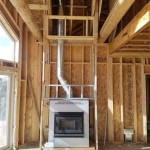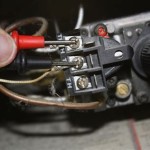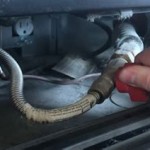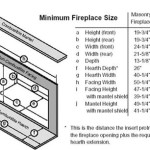Gas Fireplace Insert: Understanding the Cost to Operate
Gas fireplace inserts provide a convenient and efficient way to heat a living space while offering the aesthetic appeal of a traditional fireplace. However, understanding the ongoing operational costs is crucial for making informed decisions about their use. Several factors influence these costs, including the type of gas used, the efficiency rating of the insert, local energy prices, and the frequency of use. This article explores these factors in detail to provide a comprehensive overview of the costs associated with operating a gas fireplace insert.
Unlike traditional wood-burning fireplaces that require significant labor and expense for wood acquisition and storage, gas fireplace inserts offer a more streamlined and less labor-intensive approach to supplemental heating. They also eliminate the mess and potential environmental concerns associated with wood-burning. The primary operational cost stems from the consumption of either natural gas or propane, depending on the model and the available fuel source in a particular location. Therefore, determining the cost requires a careful examination of gas consumption rates and prevailing gas prices.
Gas Type: Natural Gas vs. Propane
The choice between natural gas and propane significantly impacts the operating cost of a gas fireplace insert. Natural gas is typically less expensive per unit of energy (measured in therms or CCF – hundred cubic feet) compared to propane. However, propane boasts a higher energy content per unit volume, meaning it produces more heat per gallon. Consequently, the actual cost difference depends on the relative prices of natural gas and propane in a specific region and the efficiency of the appliance in using each fuel.
Natural gas is supplied through pipelines, making it a readily available and often cheaper option for homes already connected to a natural gas line. Propane, on the other hand, is stored in tanks, requiring deliveries and associated costs. This added logistical step can increase the overall cost of propane compared to natural gas. Homeowners must obtain local pricing information for both gas types to accurately compare the potential operating expenses of a gas fireplace insert.
The heating value of natural gas typically ranges from 900 to 1,100 BTU per cubic foot. Propane, conversely, yields approximately 91,500 BTU per gallon. This difference in energy content plays a role in determining how long a given volume of each fuel will last when powering a gas fireplace insert. A higher BTU output translates to a shorter run time for the same volume of fuel, influencing the overall cost analysis.
Efficiency Rating and BTU Output
The efficiency rating of a gas fireplace insert is a critical factor in determining its operational cost. Efficiency ratings, typically expressed as Annual Fuel Utilization Efficiency (AFUE), indicate the percentage of fuel energy converted into usable heat. A higher AFUE rating signifies a more efficient appliance, meaning less fuel is wasted during combustion. This translates directly into lower operating costs for the same amount of heat produced.
Gas fireplace inserts with higher AFUE ratings often feature advanced burner designs, improved heat exchangers, and sealed combustion systems that minimize heat loss. These features contribute to a more efficient use of fuel and, consequently, lower operational costs. When selecting a gas fireplace insert, homeowners should prioritize models with high AFUE ratings to maximize energy savings over the long term.
The BTU (British Thermal Unit) output of a gas fireplace insert determines its heating capacity. A higher BTU output means the fireplace can generate more heat, which is suitable for larger spaces or colder climates. However, a higher BTU output also implies a higher fuel consumption rate, potentially increasing operational costs. Selecting a model with an appropriate BTU output for the intended space is crucial to avoid unnecessary energy consumption and expenses. Oversized units will consume more fuel than necessary, while undersized units may not adequately heat the space.
Calculating Operational Costs
To estimate the operational cost of a gas fireplace insert, several pieces of information are needed. First, determine the BTU input rating of the appliance, usually found on the manufacturer's label. This specifies the amount of fuel consumed per hour at maximum output. Second, determine the efficiency rating (AFUE) of the unit. Third, obtain the current price of natural gas or propane in the local area, usually expressed in dollars per therm (natural gas) or dollars per gallon (propane).
The following formula can be used to calculate the hourly operational cost: Hourly Cost = (BTU Input / (BTU per Fuel Unit * Efficiency)) * Fuel Cost per Unit
For example, consider a natural gas insert with a BTU input of 30,000, an AFUE of 80%, and a natural gas price of $1.20 per therm (100,000 BTU per therm). The hourly cost would be: Hourly Cost = (30,000 / (100,000 * 0.80)) * $1.20 = $0.45.
This calculation provides an estimate of the cost to operate the fireplace at its maximum setting for one hour. To determine the monthly or seasonal operating cost, multiply the hourly cost by the estimated number of hours the fireplace will be used per day, week, or month. It's important to remember that this is an estimate, as actual usage patterns and energy prices can fluctuate.
Smart thermostats and programmable controls can significantly reduce operational costs by automating the fireplace's operation and ensuring it only runs when needed. These features allow homeowners to set specific temperature preferences and schedules, preventing the fireplace from running unnecessarily and wasting fuel.
Proper maintenance, including regular cleaning and inspection, can also contribute to lower operating costs. A clean and well-maintained gas fireplace insert operates more efficiently, consuming less fuel and producing more heat. Neglecting maintenance can lead to reduced efficiency, increased fuel consumption, and potentially costly repairs in the long run.

Gas Fireplace Insert Cost Forbes Home
.aspx?strip=all)
Yearly Cost Of Operating A Gas Fireplace Regency

Gas Fireplace Cost Guide Unit Add Ons Installation More

How Much Does It Cost To Run Gas Fireplace In 2024

Costs Of Operating A Fireplace Valor Gas Fireplaces

How Much Does A Gas Fireplace Cost Fireplaces Direct Learning Center

Estimated Page Fireplaces Stoves Inserts Wood Gas Pellet

2024 Gas Fireplace Insert Costs

How Much Does It Cost To Run A Gas Fireplace Per Hour Day Month

Fireplace Usage Cost Calculator
Related Posts

